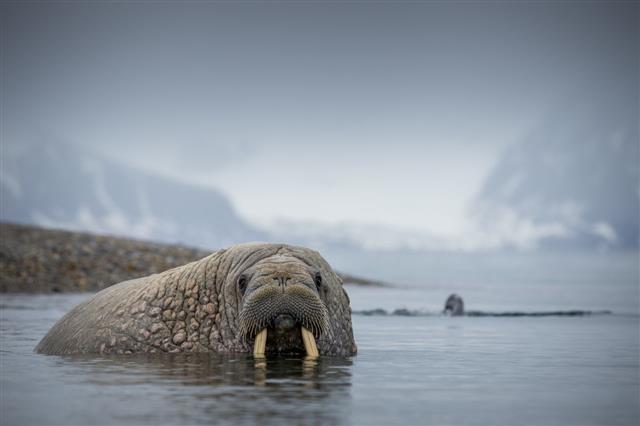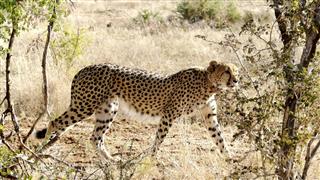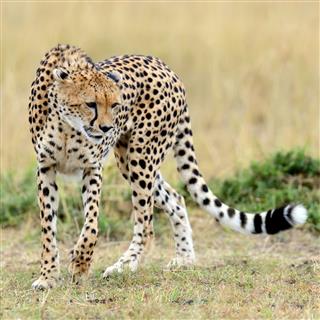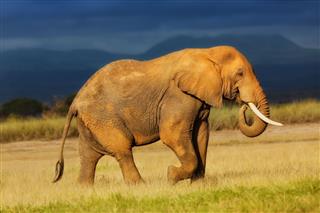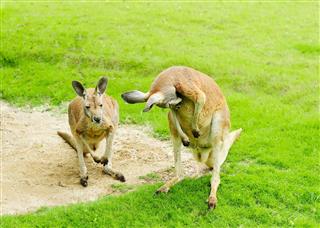
Mammals are a class of vertebrates (animals which have a backbone) which began to evolve on Earth around 200 million years ago. The largest mammal on land is the African elephant. It can grow up to 3.3 meters in height and weigh around 13,000 pounds. The distinction of having the longest gestation period of 22 months is also held by elephants.
Mammals are defined by some basic characteristics. They are endotherms, which means that they can maintain their body temperature. The females have mammary glands which produce milk for nourishment of the young ones after they are born. Hair is another important feature in mammals and it is present on their body, it may cover the entire body of some mammals while other may have it on certain parts of their body.
They have three bones in their middle ear. Their circulatory system is highly efficient. A four-chambered heart is one of the exceptional features of mammals. All mammals breathe air this does not exclude the mammals that live under water, we can see them coming to the surface to breathe. The lungs, again an important characteristics, play an important role in the exchange of oxygen and carbon dioxide.
Though mammals share certain attributes, some of them do distinguish themselves from the crowd. All mammals have 4 legs except whales, dolphins, dugongs and manatees which have lost their hind limbs in the process of evolution. Mammals usually have 7 neck vertebrae. However the manatee and two-toed sloth have 5-7 neck vertebrae, while the three-toed sloth has 8-9 neck vertebrae.
Teeth are replaced only once in their life cycle. The exceptions to this rule are pygmy rock-wallaby, silvery mole-rats and manatees, whose teeth are continuously replaced during their lifetime.
Classification of Mammals
Here is how Mammals are Classified
Based on how their offspring develops, mammals are divided into two subclasses:
Prototheria
These mammals lay eggs, incubate them for a certain period, after which the young ones are born. They are also called monotremes. The platypus, and the echidna are the only monotremes on Earth.
Theria
These mammals carry their offspring in the womb for a certain period before it is born. This class is further divided into Metatheria and Eutheria.
Metatheria
It includes mammals which have abdominal pouches. These are also known as marsupials. They give birth to underdeveloped babies which are then carried in the pouches till they are fully developed. Kangaroos, Koalas are some well-known examples of marsupials.
Eutheria
These mammals do not possess pouches and the baby is kept nourished within the body by a well-developed placenta. They are also known as placentals. About 95% of mammals belong to this group. Human beings, elephants, tigers, cows, bears are some examples of placentals.
Interesting Mammal Facts
Did You Know ?
The bowhead whale has the longest lifespan among mammals and can live for over a shocking 200 years. It means that the same whale can be adored by more than seven generations of humans.
The Biggest Mammal in The World
The largest mammal is the blue whale. It is also the biggest animal of any kind to have ever lived on Earth. It can grow to 30 meters in length and weigh around 400,000 pounds. Another feather in the cap for the blue whale is that it is also the loudest animal on Earth. Its call can be as loud as 188 decibels. It can be heard over 500 miles away.
Smallest Gestation Period in the World for a Mammal
The Virginia opossum, the rare water opossum, yapok of South America, and the eastern native cat of Australia share the shortest gestation period of 12 days.
Did you know ?
Elephants have toenails but no toes.
Fastest Mammal on Earth
The fastest mammal on land is the cheetah, which can reach speeds of up to 60 mph.
Smallest Mammal in the World
The smallest mammal in the world is the Kitti’s hog-nosed bat or bumblebee bat which grows to only 1.3 inches in length and weighs 2 grams. Bats are also the only mammals that are capable of flying.
Fastest Mammal in Water
Killer whale is one of the fastest mammal in water, it can swim at a speed of 34 mph.
Australia: The Land of Mammals
The Australian continent is the only place in the world where all three major classes of mammals are found i.e. monotremes, placentals and marsupials. It is also home to around 70% of marsupial species on Earth.
No teeth No Brushing
There are certain mammals that do not have any teeth such as platypus, echidna, baleen whales (which include 15 species), and anteaters.
Today there are more than 5000 species of mammals in the world, however human beings have perhaps become the most dominant species. Mammals have evolved over centuries to be able to thrive in all kinds of environment and are one of the most diverse inhabitants on the face of the Earth.

